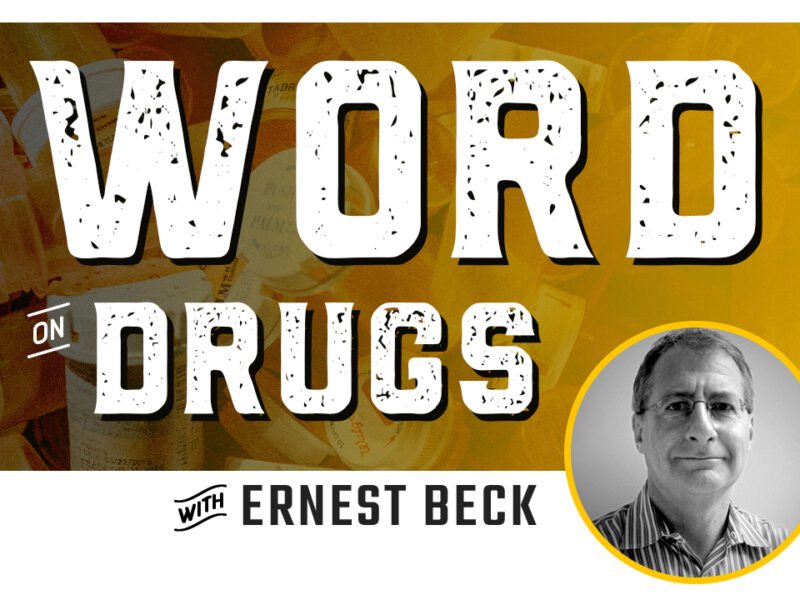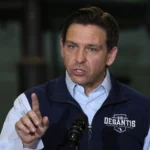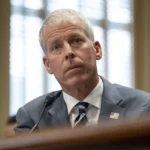THE WORD ON DRUGS: Political Squabbling Won’t Help End National Addiction and Drug Overdose Crises
Law enforcement and drug treatment must be part of a more comprehensive solution
- Published In: Other News & Features
- Last Updated: Sep 28, 2023

By Ernest Beck
Special to the Wyoming Truth
The first Republican Party debate of the 2024 presidential campaign featured both leading and long-shot candidates — but did not include former President Donald Trump — sparring over the economy, abortion and foreign policy, among other critical issues. Largely missing from the discussion, however, was a serious exchange of views about one of the most devastating public health crises the country has ever experienced: the surging addiction and overdose epidemic that killed a record 110,000 Americans last year alone.
When the topic did come up, the candidates bashed the Biden administration for its lax border control policies, alleging that this allows the powerful synthetic opioid fentanyl — which is responsible for a majority of fatalities nationwide — to flood the U.S. and kill Americans.
To stop the flow of illicit drugs, the candidates vowed to increase interdiction and law enforcement along the southern border. Florida Gov. Ron DeSantis even floated the idea of using “deadly force” to invade Mexico and hunt down smugglers and “leave them stone cold dead.”
The tough talk on border enforcement might appeal to some voters. But it ignores the harsh realities of not only addiction but, equally important, the logistics of the fentanyl supply chain.
Law enforcement officials say that most of the chemicals needed to make fentanyl are produced in China and sent to Mexico to either be processed into powder form or made into counterfeit pills that resemble prescription drugs, such as Xanax and Adderall, and are consumed unbeknownst to the user.
However, the drug is not primarily smuggled across the border by desperate, undocumented immigrants at remote locations.
Rather, the bulk of fentanyl product seizures—nearly 90%—are confiscated at legal crossingsandpoints of entry, according to the Drug Enforcement Agency. The drug is often hidden in commercial vehicles driven by U.S. citizens who work for the cartels. It is also comes in by boat and even drones; this makes it easier to elude detection, and then transported across the country, according to Casey Patterson, a drug intelligence officer based in Wyoming for the Rocky Mountain High Intensity Drug Trafficking Areas (HIDTA) Task Force.
He told me that Wyoming remains both a crossroads for drug trafficking and also a destination for local sale and use. Drugs like fentanyl are not only coming into Wyoming in private vehicles and rental cars on the east-west and north-south interstate routes, but also being shipped as parcels through the mail, as cargo and in baggage in planes and buses.
“Our role is to focus on supply reduction, and it is not always easy,” Patterson explained. “We’re always playing catch up. As soon as we wrap our heads around one method of trafficking and get control of it, another one pops up. It’s constantly evolving.”
For example, the drug has been found stuffed into car seat cushions, packed in fruit shipments and boxes of diapers, and hidden in hollowed-out wooden pallets on 18-wheeler trucks as they pass through Wyoming, Patterson said.
Patterson’s office assesses fentanyl to be the most prevalent drug in the Rocky Mountain region that includes Wyoming, and “the most significant drug threat” in the area, accounting for 44% of current interdictions, up from 17% in 2021 and the highest amount recorded to date. Yet, despite increased interdiction around the country, supply and demand remain strong, and the price per pill is dropping.
While criminal enforcement is an essential component to reducing drug trafficking, ignoring the facts and politicizing the problem will not stop the tragic spiral of addiction and death.
“We can’t arrest our way out of this problem,” Patterson said, adding that “the number of overdoses is bringing raw emotions out of desperation and politicians are coming up with policy proposals to solve the crisis, whether good or not.”
The troubling spike in overdose deaths over the past two decades has played out during both Republican and Democratic administrations. Trump favors a law-and-order approach and once proposed executing drug dealers. Under President Biden, Customs and Border Protection has seized a record 260,000 pounds of illicit drugs at ports of entry, including 15,000 pounds of fentanyl. Biden has also expressed support and increased funding for harm reduction measures and treatment.
Yet the crisis has only worsened in every corner of the country, with an average of just over 300 deaths per day. In Wyoming, there was a slight moderation in fatalities in 2022, with 93 overdose deaths, down from 98 the year before. Opioids were connected to 72 of them, fentanyl linked with 48, and many involved multi-substance use such as methamphetamines, according to the Wyoming Department of Health.
Politicians who advocate a law enforcement-focused strategy fail to recognize that substance use is a complex and chronic medical condition that must be addressed as a public health issue. In my opinion, what we urgently need is a comprehensive solution that encompasses both increased interdiction at the border and along other routes and pipelines, as well as prevention programs to stop addiction at the source.
To reduce fatalities, we need overdose prevention centers and wider availability of overdose-reversal medications like Narcan.
Crucially, we need more evidence-based drug treatment programs that include peer-based counseling. And finally, we must place a greater emphasis on services that provide housing and employment to support those in recovery to more easily re-enter society.
Will cooler heads eventually prevail? Hopefully. Lewis Kolski, a lecturer in the School of Public Affairs at the University of Colorado, Denver, suggested the potential for this after the 2024 presidential election.
“Once the campaigning is over, the prevailing administration can address the problem when governing starts, with lawmakers on both sides of the aisle and other key stakeholders,” Kolski said. “Collaboration could lead to solutions that combines law enforcement and other regulatory options to achieve similar public policy objectives.”
Ernest Beck writes about drug policy. He is the former communications lead for the Rosenthal Center for Addiction Studies in New York.













